![]()
![]()
Today, December 8, 1892, the Order of Cistercians of the Strict Observance, or O.C.S.O. (Ordo Cisterciensis Strictioris Observantiae), was formally decreed, though you may know them by another name: Trappists. Pope Leo XIII called a plenary general chapter in Rome, and with Cardinal Mazzella as president, the Sacred Congregation of Bishops and Regulars negotiated and created the new order, and the decree was titled the “General of the Order of the Reformed Cistercians of Our Lady of La Trappe.”
Essentially, it’s “a Roman Catholic religious order of cloistered contemplative monastics who follow the Rule of St. Benedict. A branch of the Order of Cistercians, they have communities of both monks and nuns, commonly referred to as Trappists and Trappistines, respectively.” The Cistercians began around 1098, but the Trappist subgroup within them is only 124 years old.
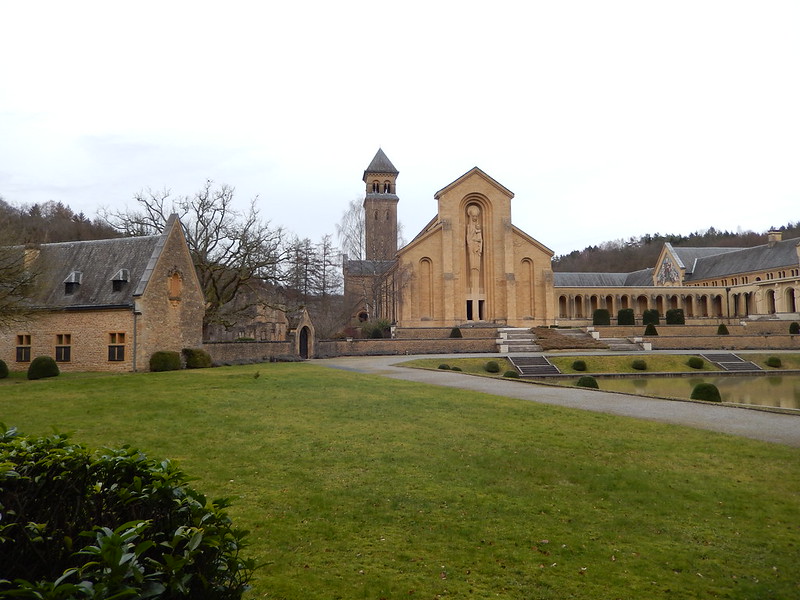
The monastery at Abbaye Notre-Dame d’Orval.
Here’s their basic history:
The order takes its name from La Trappe Abbey or La Grande Trappe, located in the French province of Normandy. A reform movement began there in 1664, in reaction to the relaxation of practices in many Cistercian monasteries. Armand Jean le Bouthillier de Rancé, originally the commendatory abbot of La Trappe, led the reform. As commendatory abbot, de Rancé was a layman who obtained income from the monastery but had no religious obligations. After a conversion of life between 1660 and 1662, de Rancé formally joined the abbey and became its regular abbot in 1663. In 1892 the reformed “Trappists” broke away from the Cistercian order and formed an independent monastic order with the approval of the pope.
As of the beginning of this year, there were 102 Trappist monasteries worldwide, including seventeen in the United States. Within the order, there are 681 priests and 1,693 total persons living and working at the monasteries. Of those monasteries, about twenty of them are regulated by the International Trappist Association, which provides a protected trademark for products made and sold by Trappist monasteries. Products made by Trappists vary widely, and just in the category of food include bread, mushrooms, chocolates, jam, pea soup, honey, cheese, biscuits, liquors, olive oil, wine, and, of course, beer.
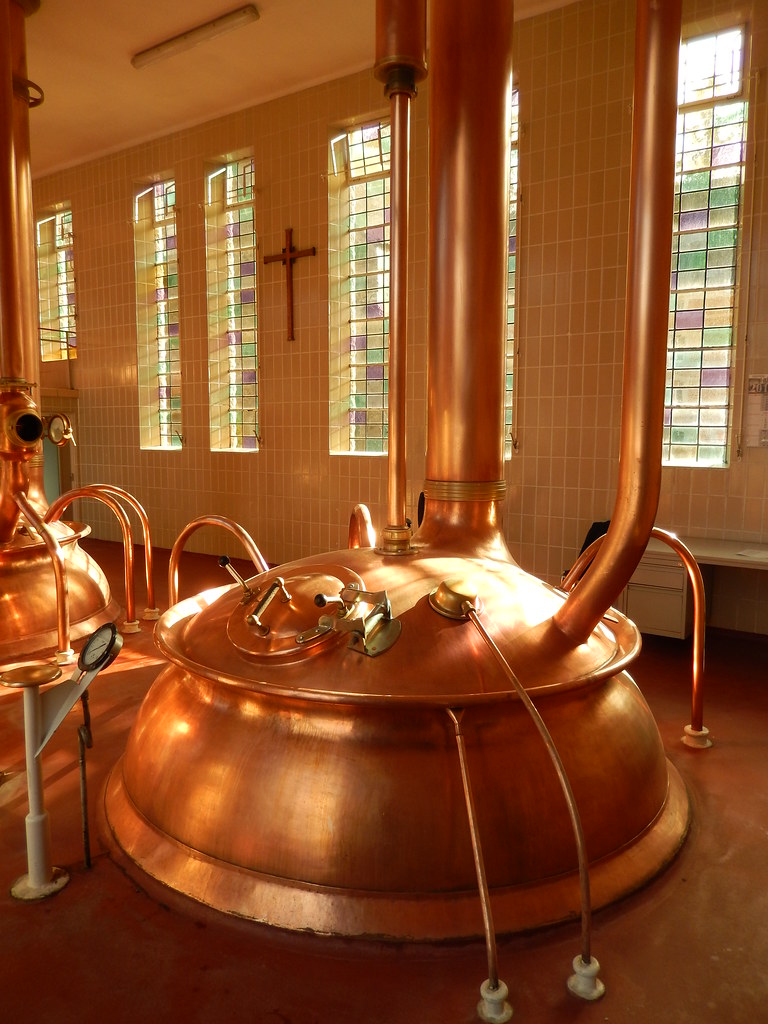
The brewery at the Abbey of Saint-Remy in Rochefort.
There used to be fewer, but with a number of recent additions, there are now a dozen Trappist breweries listed on the ITA website from six countries. Belgium still has the most, with Achel, Chimay, Orval, Rochefort, Westmalle and Westvleteren. The Netherlands has two, with La Trappe and Zundert. Then there’s one a piece from Austria (Stift Engelszell), France (Mont des Cats), Italy (Tre Fontane) and the United States (Spencer).
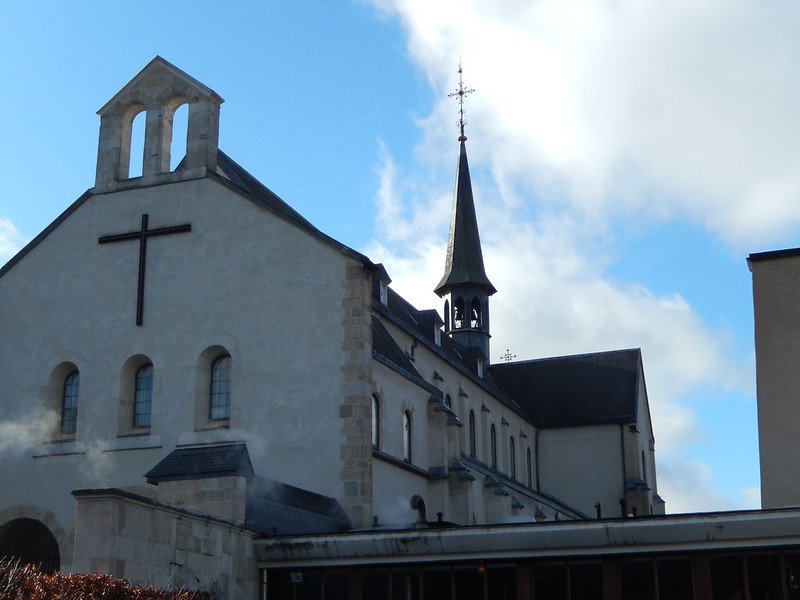
The Abbey of Saint-Remy in Rochefort.
Here’s another short description of them, from the Free Dictionary:
Trappists, popular name for an order of Roman Catholic monks, officially (since 1892) the Reformed Cistercians or Cistercians of the Stricter Observance. They perpetuate the reform begun at La Trappe, Orne dept., France, by Armand de Rancé (c.1660). The reformer’s aim was to restore primitive Cistercian (hence also primitive Benedictine) life; actually the Trappists surpassed both St. Benedict and St. Bernard in austerity. The reform was acclaimed in the world, but many Cistercians resisted it. The whole order was affected, but some abbeys never accepted the reform as such. The life of Trappists is one of strict seclusion from the world. Working hours are devoted to common and private worship, labor (often manual), and study; there is no recreation, meat is eaten only by the sick, and silence is observed except under unusual circumstances, but not by vow. Lay brothers do much of the farming, a peculiarly Cistercian practice. In the 19th and 20th cent. the Trappists shared in the revival of monasticism and expanded greatly. There are 12 abbeys in the United States. The head of the order, the abbot general of Cîteaux, lives in Rome.
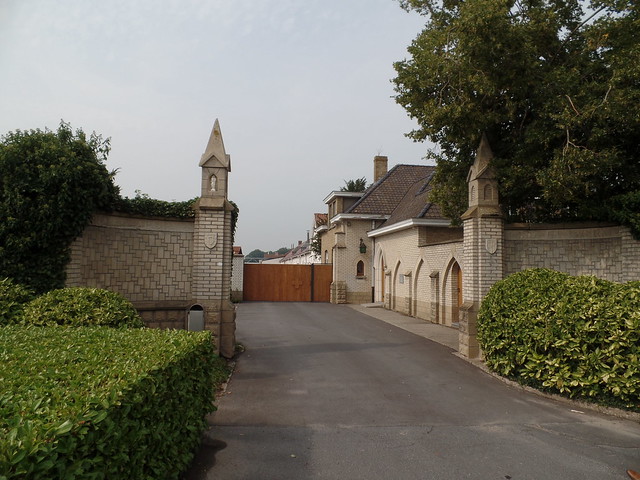
The gate at the Saint-Sixtus Abbey of Westvleteren, where you can pick up beer by the case.
And finally, here’s a more thorough overview, from “An Introductory History of The Cistercians,” by M. Basil Pennington, OCSO:
Beginnings
On 21 March 1098, the saintly abbot of the thriving Benedictine Abbey of Molesme, Robert, led twenty-one of his monks into the inhospitable thickets of Citeaux to establish a new monastery where they hoped to follow Benedict of Nursia’s Rule for Monasteries in all its fullness. The unhappy monks of Molesme, grieved at the loss of their holy leader, soon obtained a papal command for his return. The new struggling community continued until 1109 under the leadership of Alberic, who introduced the idea of lay brothers being accepted as full members of the monastic family, making it possible for the monks to be free to follow all the demands of the Benedictine Rule. Stephen Harding, who succeeded Alberic at the helm of the community, welcomed the dynamic Bernard of Fontaines, who came in 1112 with thirty relatives in tow. Thus began the saga of Citeaux.
The Charter of Charity
Before Bernard died in 1153 he had not only founded the great Abbey of Clairvaux which would become a focal point for all of Christendom but he personally sent forth men to start sixty-five other houses while his brother abbots started another 235. Stephen and the other founders were determined to keep alive the pristine observance of the Rule which they had come to Citeaux to establish. To this purpose they created a Charta caritatis, a constitution which bound all Cistercian abbots to come to Citeaux annually for a general chapter. It also bound all the houses to a common observance and set up a system of visitation which respected the autonomy of each house but assured its fidelity.
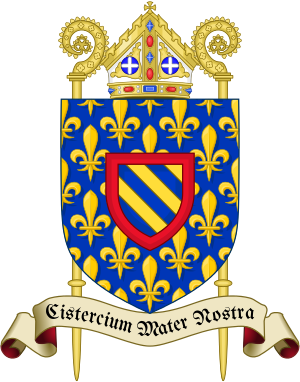
Expansion and Decline
The order continued to expand: by 1200 there were over 500 houses; on the eve of the Reformation, the records showed 742. In time geography began to defeat these model means of regularity which were eventfully adopted by all other religious orders. The decline in the number of recruits had its effect. But most destructive was the practice of the ecclesiastical and secular powers to give the abbatial office to clerics who had no interest in the well-being of the monastery, only in its revenues, leaving the monks without guidance and financial means. In some instances secular powers required the monks to take on active ministries, in others the monks did this on their own. There were repeated attempts at reform, most notably in the century after the Council of Trent.
The Trappist Reform
In 1664 Pope Alexander VII recognized within the Cistercian Order two observances, the Common and the Strict, sometimes called the “abstinents” for their fidelity to Benedict’s prohibition of the use of flesh meat in the monastic diet. Among these latter arose Armand Jean de Rancé, a commendatory abbot who underwent a conversion and brought about in his Abbey of Notre Dame de la Grande Trappe a renewal in the practice of monastic enclosure, silence, and manual labor, expressing a spirit of apartness from all worldliness and a dedication to prayer and penance. By the disposition of Divine Providence his was the one community that escaped complete destruction and dispersion at the hands of the French Revolution.
Trappist Expansion
In the course of many and varied travels under the leadership of Augustine de Lestrange the community was able to establish foundations in Spain, Belgium, England, Italy and the United States. When the monks returned to re-establish La Trappe after the downfall of Napoleon, Vincent de Paul Merle remained in America to establish the first permanent Cistercian community in the New World which today flourishes in Spencer, Massachusetts: Saint Joseph’s Abbey. Monasteries of the Common Observance continued in eastern Europe in many cases operating schools and pastoring parishes.
The Order of Citeaux
In 1892 Pope Leo sought to bring all the Cistercian houses back together into one order but pastoral responsibilities and national loyalties made it impossible for the Common Observance houses who were divided into many national congregations to unite with the Strict Observance who were at that time largely French and who had opted for the strict monastic heritage of the Cistercian founders. Thus the Pope recognized two Cistercian Orders, called today the Order of Citeaux and the Cistercian Order of the Strict Observance, popularly known as the Trappists. The Order of Citeaux suffered greatly under the communist onslaught, not only in eastern Europe but also in Vietnam, where it had a congregation of five houses. On the other hand, the Strict Observance began to flower on the eve of the Second World War and continued to grow until it had over a hundred houses located on all six continents. Only in Yugoslavia and China did its houses suffer at the hands of communism. With the renewal of the Second Vatican Council both orders have written new constitutions which retain the reforming features of Saint Stephen Harding, the general chapter (though no longer annual, usually every three years) and visitations by the superior of the founding abbey.
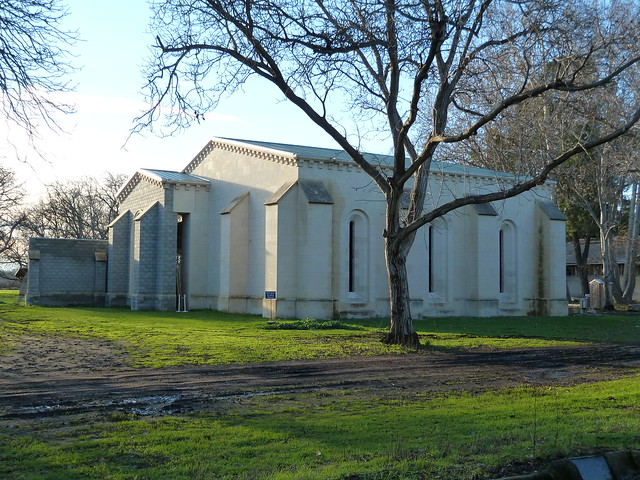
Though not a Trappist brewery, the closest O.C.S.O. monastery to me is the Abbey of New Clairvaux, which is a short drive from Chico. For a few years now, they’ve partnered with Sierra Nevada Brewing Company to create the Ovila line of beers.

Extreme good article this is about trappist beer and other beers. We sell Westvleteren Trappist 12 beer at our site Westvleterenbeers.com . So if you really like Belgian Trappist beer, just take a look at the site. You are welcome!